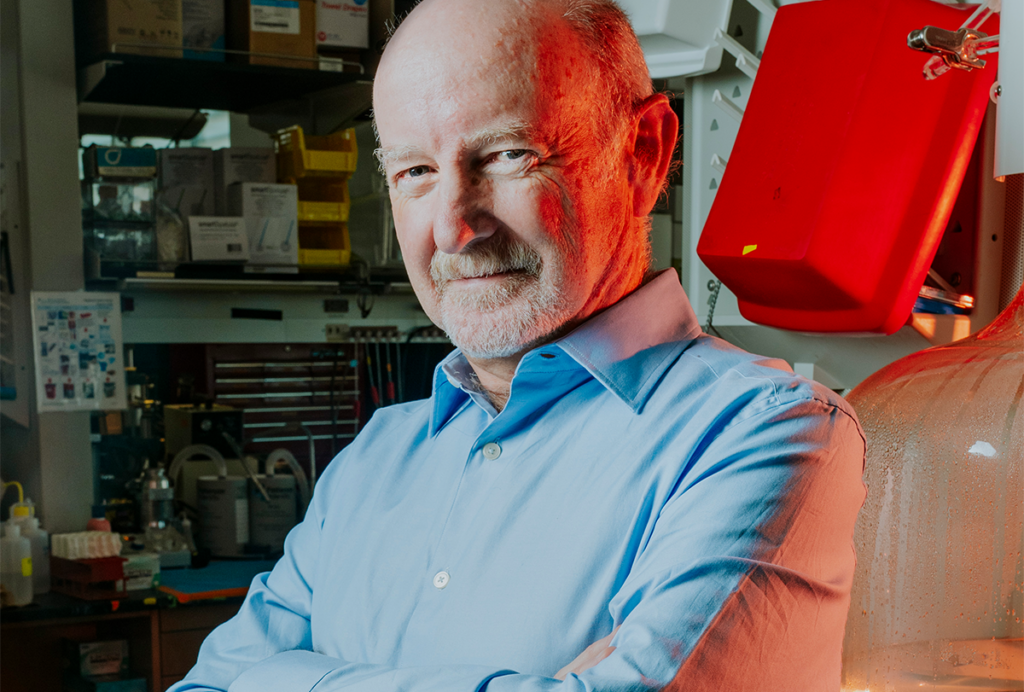Normocentric world
In a Nature commentary, Laurent Mottron, professor of psychiatry at the University of Montreal, argues that autism is not a defect that needs fixing.
-
Autism advantage: Laurent Mottron (left) collaborates in his research with many individuals who have autism, such as Michelle Dawson (right).
Here at SFARI.org, most of the researchers we write about, whether geneticists, neuroscientists or clinicians, are trying to understand the intricacies of the autistic mind — and some, ultimately, are trying to ‘normalize’ it.
Laurent Mottron, professor of psychiatry at the University of Montreal in Canada, has long argued against this notion of ‘normal.’
As he wrote in a Nature commentary earlier this month, Mottron believes that “autism should be described and investigated as a variant within the human species,” not as a defect to be suppressed.
His argument reminds me of a popular psychological test called the Strength Deployment Inventory, or SDI, that companies often use to train managers. The test is based on the premise that an individual’s weaknesses are merely misplaced strengths. Arrogance is misplaced confidence, according to this logic, an indecisive individual is one who is flexible, and a gullible person is often trusting.
The same dual perspective can be applied to autism. People who don’t have autism — or, as Mottron calls them, “normocentric” — often describe the features of autism as deficits: delayed, obsessive, narrowly focused, socially awkward, uncommunicative.
But some of these traits can, in the right circumstances, be advantageous. An obsessive person might be passionate, and one who’s narrowly focused probably has exceptional attention to detail.
Mottron argues that the normocentric attitude is pervasive in the scientific literature of autism, and he has a point. For example, he points out that some brain imaging studies find that people with autism have abnormally thick cortical layers, whereas others find them abnormally thin, but in either case, the findings are called deficits. And many autism papers end with a paragraph about how the data could help treat the disorder.
That said, I think Mottron sometimes goes too far in his emphasis on the abilities of those with autism. When I interviewed him in April about a meta-analysis of brain imaging studies, he told me that in a region called the fusiform gyrus, people with autism “display the highest level of superiority and activity in comparison to non-autistics.”
As other experts pointed out, we can’t say whether one brain signature is superior to another, only that people with autism seem to be using a different brain network than controls to complete the same task.
And there are, of course, many children with autism who cannot speak and have severe intellectual disability. As Mottron himself points out in the commentary, nine out of ten adults with autism do not have a regular job, and four out of five depend on their parents.
It’s great that a scientist is highlighting the strengths, rather than weaknesses, of people with autism in a high-profile journal — especially because, as Mottron points out, people with autism can be particularly good researchers and analytical thinkers. For seven years he has collaborated with Michelle Dawson, a woman who has autism, and seven other people with the disorder have also worked in his lab.
For all autism researchers, even those focused on treatments, it’s important to remember the people on the spectrum who don’t want to — or need to — be recalibrated to someone else’s idea of ‘normal.’
Recommended reading

PTEN problems underscore autism connection to excess brain fluid

Autism traits, mental health conditions interact in sex-dependent ways in early development

New tool may help untangle downstream effects of autism-linked genes
Explore more from The Transmitter

Newly awarded NIH grants for neuroscience lag 77 percent behind previous nine-year average

